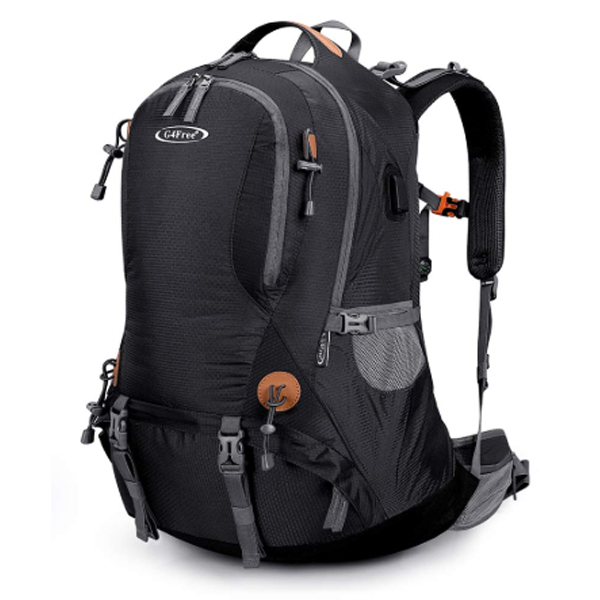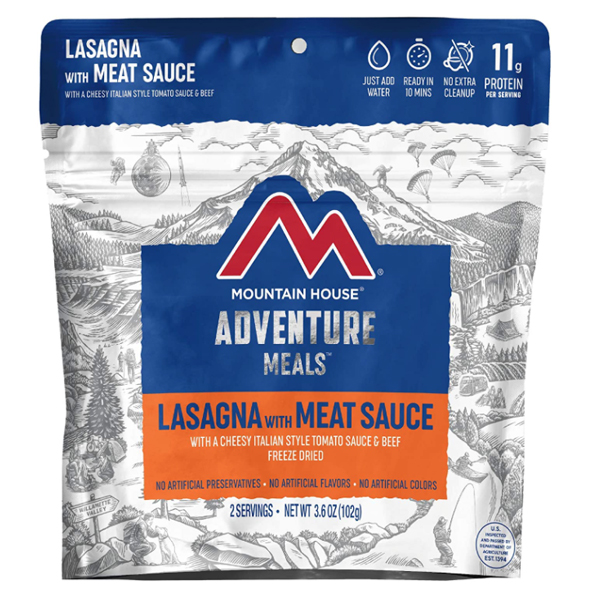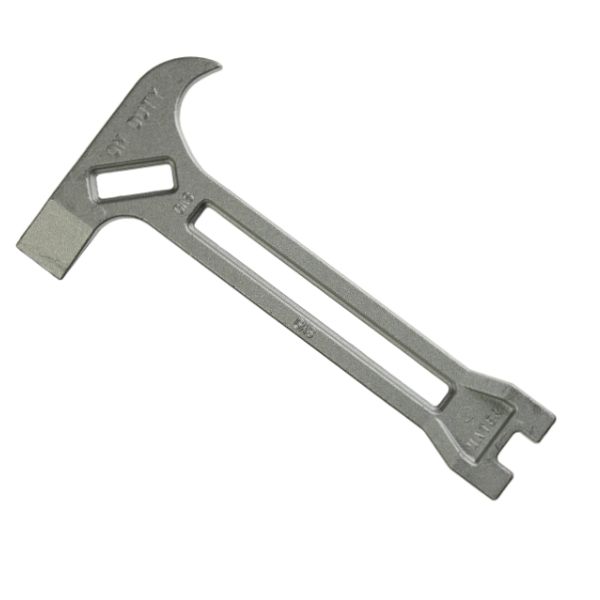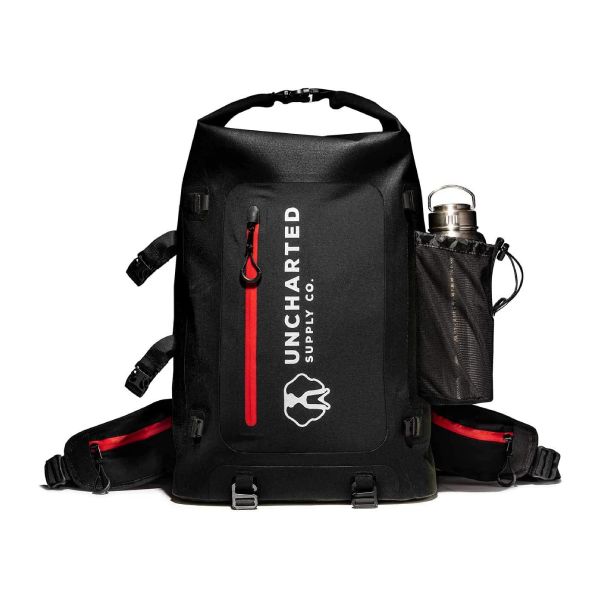Best Cordage, Rope, Line, Paracord for Survival
We consider cordage and rope to be one of the most critical survival tools. Each rope type performs differently under certain circumstances. So, for survival preparation, is there one that can work well in most circumstances? Is there one we can rely on in nearly any emergency usage? After a lot of research and testing we found the best cord/line for all around survival usage.
The Top Cordage Picks
550 Paracord Type 3 is our preferred, all-around, general-use survival cord. Read below for our test results and research findings.
550 Paracord Type 3
550 paracord type 3 was selected by the military for parachute usage. It is rated to hold 550 pounds and is highly favored for survival situations. We consider it one of the highest priority emergency essentials and it should be a part of go-bags and other survival supplies.
Consider using it for emergency shelters, lashing tools and furniture, first aid, and more.
550 Paracord with Integrated Fishing Line, Wire, Tinder
550 paracord type 3 was selected by the military for parachute usage. It is rated to hold 550 pounds and is highly favored for survival situations. We consider it one of the highest priority emergency essentials and it should be a part of go-bags and other survival supplies.
This survivor cord also includes fishing line, waterproof fire tinder, and conducive copper wire. Check out our review below.
About This Article
Content:
Scope:
Difficulty:
Table of Contents
Learn about Cords, Ropes, and Lines
Cords vs Rope
Rope and cord have a similar construction. However, they also have different purposes and capabilities. Typically, cord will have a much smaller diameter than rope.
Cord:
- Diameter thinner than 1/8-inch
- Used for light tasks like camping, cargo stowage, sports and survival
- Made from strands of fiber that are twisted or braided together.
Rope:
- Diameter thicker than 1/8-inch
- Usually stronger than cord
- Used for heavy loads
- Types of rope range from light-duty to heavy-duty
- Made from strands of fiber or twisted or braided cords
Common Types of Cords or Rope
- Paracord - Originally created for military parachutes. Thin, strong, synthetic.
- Twine - Cheap synthetic or natural cord made from one-twist plies. Example: farmers use twine for hay bales.
- String - One or more fibers intended for sewing or other light-weight uses.
- Nylon Rope - Strong, flexible, light-duty synthetic rope made of smaller cords or strands. Great for outdoor uses like boats and other water sports.
- Natural Rope - Strong, rigid rope made from hemp, jute, etc. Great for rope swings, gardening, etc.
- Climbing Rope - Dynamic rope with a strong flexible core and protective sheath. Intended as protection from climbing falls.
- Natural Sinew - Fibers found in animals that can be used in survival scenarios.
Cordage/Rope Construction
- Single Braid - These ropes (no core) are created by braiding instead of twisting the strands together.
- Plaited - Constructed from four sets of strands that are woven and intertwined with each other to wrap around a core.
- Twisted - Created by coiling together three strands and in the same direction. The fibers in each of the three strands twists in opposite directions from each other so that the rope will hold together.
- Double Braid - Consists of a braided core with braided rope wrapped around it. It's a very durable rope.
- Diamond Braid - Created by raiding rope around an inner fiber core.
Cordage/Rope Materials
- Manila - Produced from the fibers of the Abaca plant and known as a "hemp" rope.
- Poly Combo - Created by using two types of material: polypropylene with a polyester outer sheath.
- Polypropylene - Synthetic material that resists mildew and rot.
- Polyester - Great all-purpose synthetic material that is very durable.
- Nylon - Very strong, UV resistant synthetic material.
- Aramid - Includes Kevlar rope among others - incredibly strong.
- Jute - Natural fiber that has a great 'grip'.
- Cotton - Natural fiber rope that can decompose over time.
Choosing the Best Rope or Cord for Survival
There are so many options for different applications. It's just not practical to carry every one or even several in an emergency kit. So, is there one product that can play the "jack-of-all-trades" role? Is there one "Best" option? How to you choose the best rope or cord for survival?
First, let's look at the most common survival applications to see what's required.
Survival Uses for Cordage
There are endless uses for cords and lines in an emergency. Here are some common situations to be prepared for:
Light Duty
- Stowing gear
- Building shelter
- Lifting food out of reach of animals
- Securing loads in a vehicle
- Shoe laces
- Sewing or Repairing clothing
- Snares
- Climbing or Rappelling (single line or ladders)
Heavy Duty
Based on this list of common survival uses we likely need two types of line. One light duty and one heavy duty. For this article we're going to focus on light duty options we can carry in an emergency kit. We need a product that is:
- strong
- light weight
- thin
- flexible
- made from smaller fiber strands
- weather resistant
- UV resistant
550 Paracord Type 3 is the Best Survival Cordage
We set out to find the best cordage/rope/line options for survival. After a lot of research and testing we found a best overall product for all around use. It's not the best when compared to each rope type in unique situations. However, we're looking for one all-around product to carry in our emergency kits and survival bags that will perform well in nearly all situations.
Research
We searched dozens of websites and survival books. Older books recommended natural ropes and lines. The more modern the resource, the more references there were to synthetic options out performing natural options.
Some of the poly options are very heavy and bulky. They would be hard to transport in a pack for long distances.
The most commonly recommended modern cord type by far is 550 Paracord Type 3. It fits all of the criteria.
It's strong, light weight, thin, flexible, composed of multiple strands, weather resistant, and UV resistant for some time.
So, What is 550 Paracord Type 3?
Paracord was originally created for the military. It was called parachute cord and was designed for military parachutes. It had to be consistent and hold up to the active duties of military applications.
Soon, private companies began to produce it but not all paracord is created equal. Some products are inferior. Some is better suited for crafts and very light applications.
For survival purposes we recommend using what the military uses: 550 Paracord Type 3. It's designed to sustain 550 pounds of static weight per strand. In our research we found there are typically 2 paracord materials: Nylon and Polyester. Nylon performs best in most applications and is preferred by the military.
Since the military doesn't take product testing lightly, we're going to default to the milspec 550 Paracord Type 3 as our preferred cordage option.
Milspec 550 Paracord Type 3
Here are the specs defining milspec paracord:
- 7/3 construction - 7 individual strands of 3 twisted yarn cords (21 yarns total)
- Nylon sheath - The 7 strands are wrapped in a woven nylon sheath
- 550 pounds - Must be able to sustain a 550 lb static, vertical weight per cord strand
- Colored marker - Each manufacturer is government certified and must include their color as part of their cord
Vendors are required to to add a color coded strand within their milspec paracord to distinguish it as milspec and individual from other products.
Testing
We put 550 Paracord to the test. We stressed it, burned it, braided it, dissected it, rubbed it, cut it and tied it. Here's what we found:
- Stress test - We hung 550 lbs from a single strand of full paracord overnight with no problems. It performed when wet as well. We suspect it could hold more based on research we've read.
- Burn test - Paracord melts easily and is NOT resistant to flame. It's easy to melt the ends of paracord after it's been cut so it doesn't fray. If you heat up melted cord enough it'll sustain a flame for some time but the fumes are toxic.
- Braid test - Articles we've read suggest that knotting paracord creates a weak point at the knot. However, braiding paracord strands into a thicker rope increases the strength 1:1 as long as no creases are created. We didn't have enough weight to test a 3-strand braid but we've read that it'll easily hold a static 1650* pounds. Four strands will hold over a literal ton of static, vertical weight*.
- Dissection - We cut sections of paracord open to see the individual strands. We separated the individual strands as well. Basically, paracord is made of yarn. The multiple strands of yarn give it its strength.
- Abraision - Paracord is "good" against abrasion. The heavier the weight, the less it performs. It's definitely best to keep applied paracord from rubbing on something.
- Cutting - Paracord cuts pretty easily. We found that serrated blades work best and have read that they perform better because of the oscilating anglular pressure as the blade is pulled through the cord.
- Tying - Knots are easy to tie in paracord and they synch up and hold well too. We found that the easiest way to undo a tight paracord knot is with the pliers from a multitool (stronger fingers).
Caveats and Warnings
- *All tests are on static, vertical weight. Dynamic weight (weight in motion or bouncing) and horizontal or angular weight creates a significantly higher load. Because a cord can sustain 550 lbs of static weight doesn't mean you can use that math for hanging a hammock or suspending weight in wind, etc.
- The military applies several lines of paracord to a parachute. They never intend for a paratrooper to sustpend from one line.
- Paracord is not a great rappelling or climbing line. Most climbing ropes are dynamic and SIGNIFICANTLY stronger than paracord.
Survivor Cord
Survivor Cord is a proprietary cord that adds 3 additional strands to the overall paracord: jute tinder, wire, fishing line. We dissected and tested the whole cord as well as the individual strands. Here's what we found:
- The whole paracord performs as well as normal 550. However, there are a couple of notes:
- When cutting, the wire pokes out the end. We had to trim it after melting the ends.
- It's a bit heavier.
- NEGATIVE: one really negative aspect of this product is that you have to dissect the cord to get access to the 3 dedicated strands.
- Jute tinder - this strand is awesome for starting fires. It is waxed and waterproof and lights right up. There have been reports of an inability to light it with a ferro rod but if you can get a flame, it's a great tinder. We've started a few fires with it and were happy with the performance.
- Fishing line - the fishing line strand is a cool idea. The line is a larger gauge but worked great for catching fish when we tested.
- Wire - the wire is VERY thin. We'd love to think of it as a snare but you'd have to braid a few strands to use it as a snare.
Recommendations: carry regular 550 paracord type 3 as your go-to cord with 20 feet or so of the Survivor cord for the extra features.
Our Top Cordage Picks
*Top-Rated Products Only
550 Paracord with Integrated Fishing Line, Wire, Tinder
Enhanced milspec type 3 550 SurvivorCord for survival
Buy on AmazonMilspec 550 Paracord Type 3 is the Best Survival Cordage
While there are a number of options for line and cord, milspec paracord is the best all around cord for survival situations. It's light, flexible, strong, and element resistant.
We've used it camping, around the house, and in many outdoor scenarios. It holds up well and if you only get one option, this is it.
550 Paracord with Integrated Fishing Line, Wire, Tinder
Enhanced milspec type 3 550 SurvivorCord for survival
Buy on AmazonRecommended Next Topic
1This post may contain affiliate links. If you make a purchase, I may earn a small commission at no additional cost to you.
2 As an Amazon Associate we earn from qualifying purchases.
3 Most reviews are based on personal experience from one of our content editors. Some are based on research and the opinions of other reviewers.
























